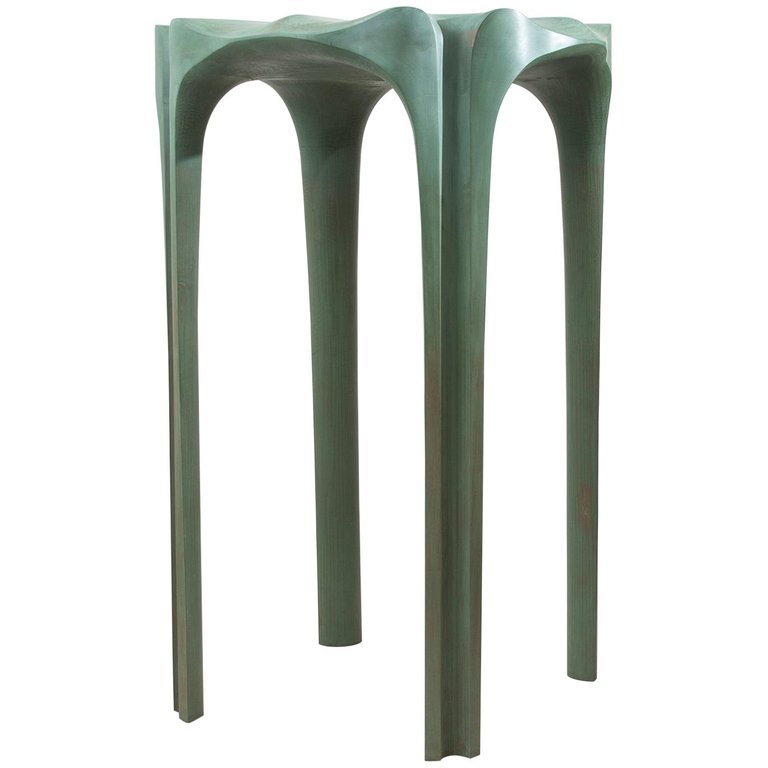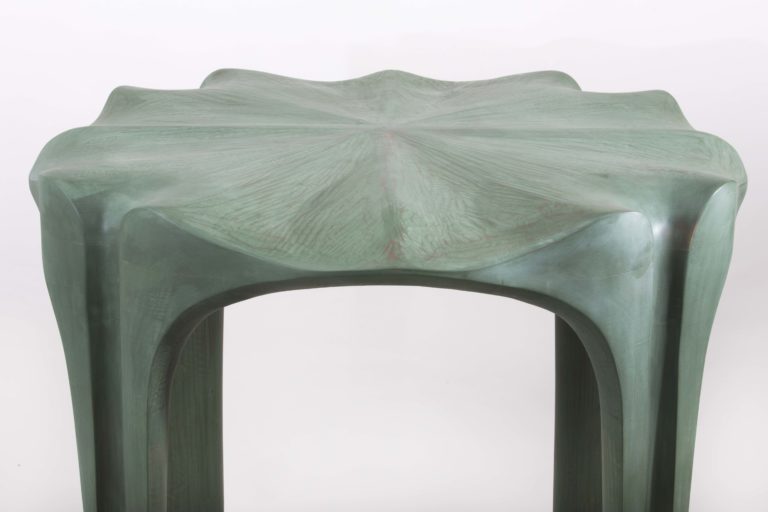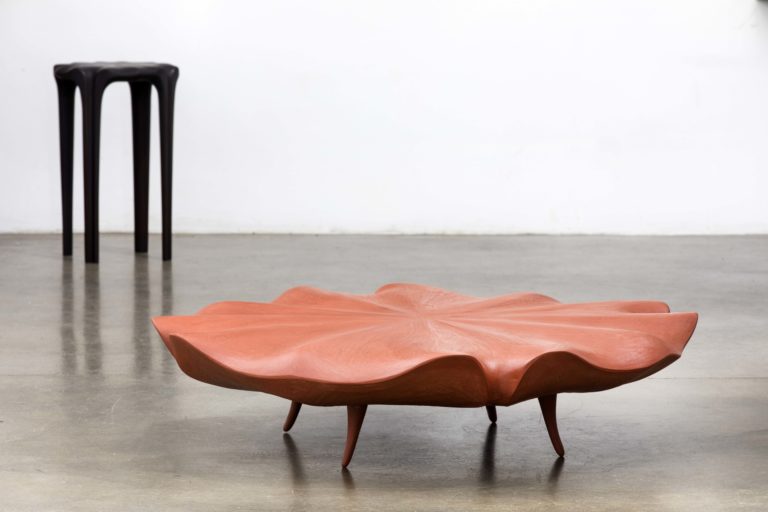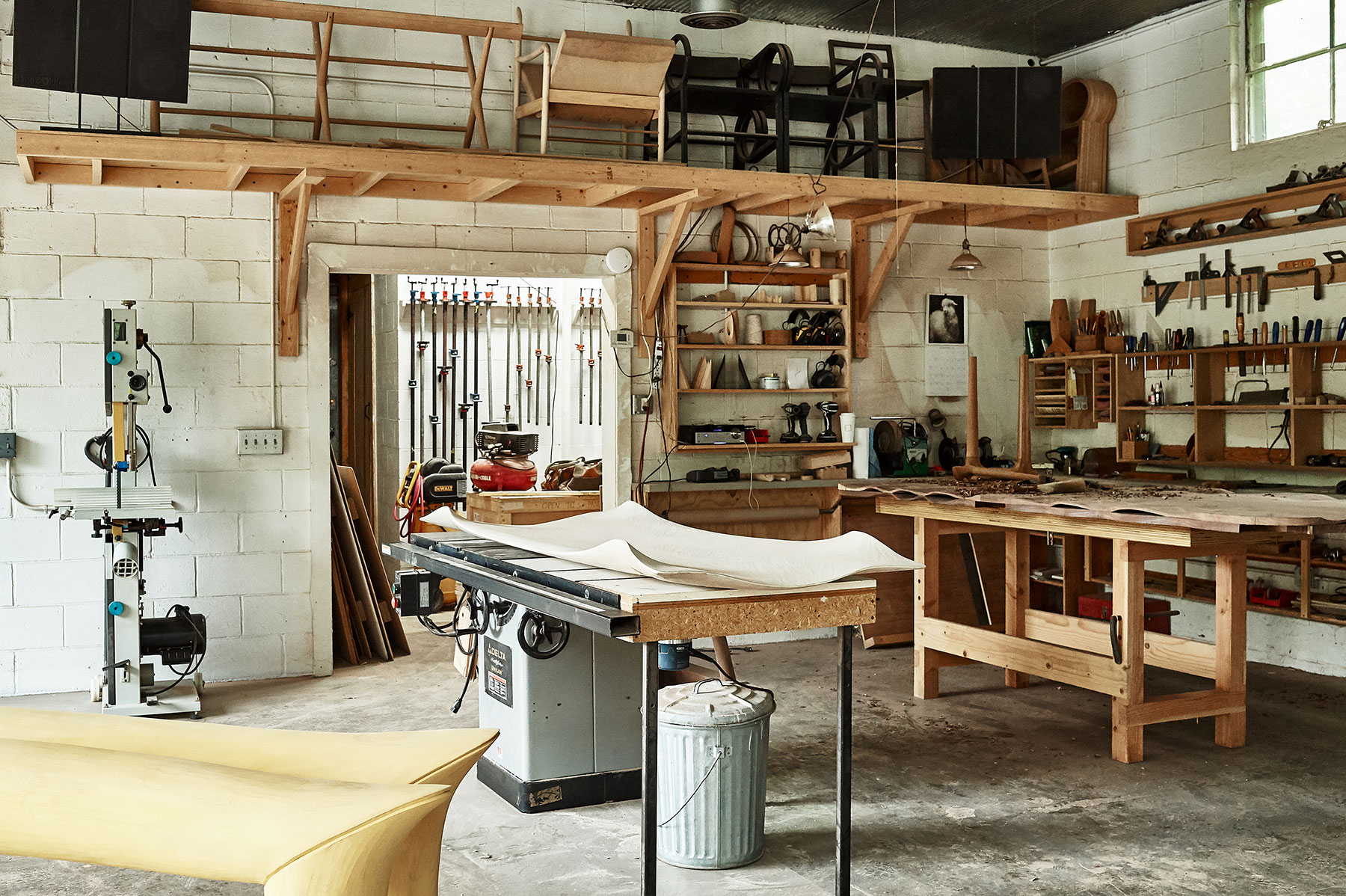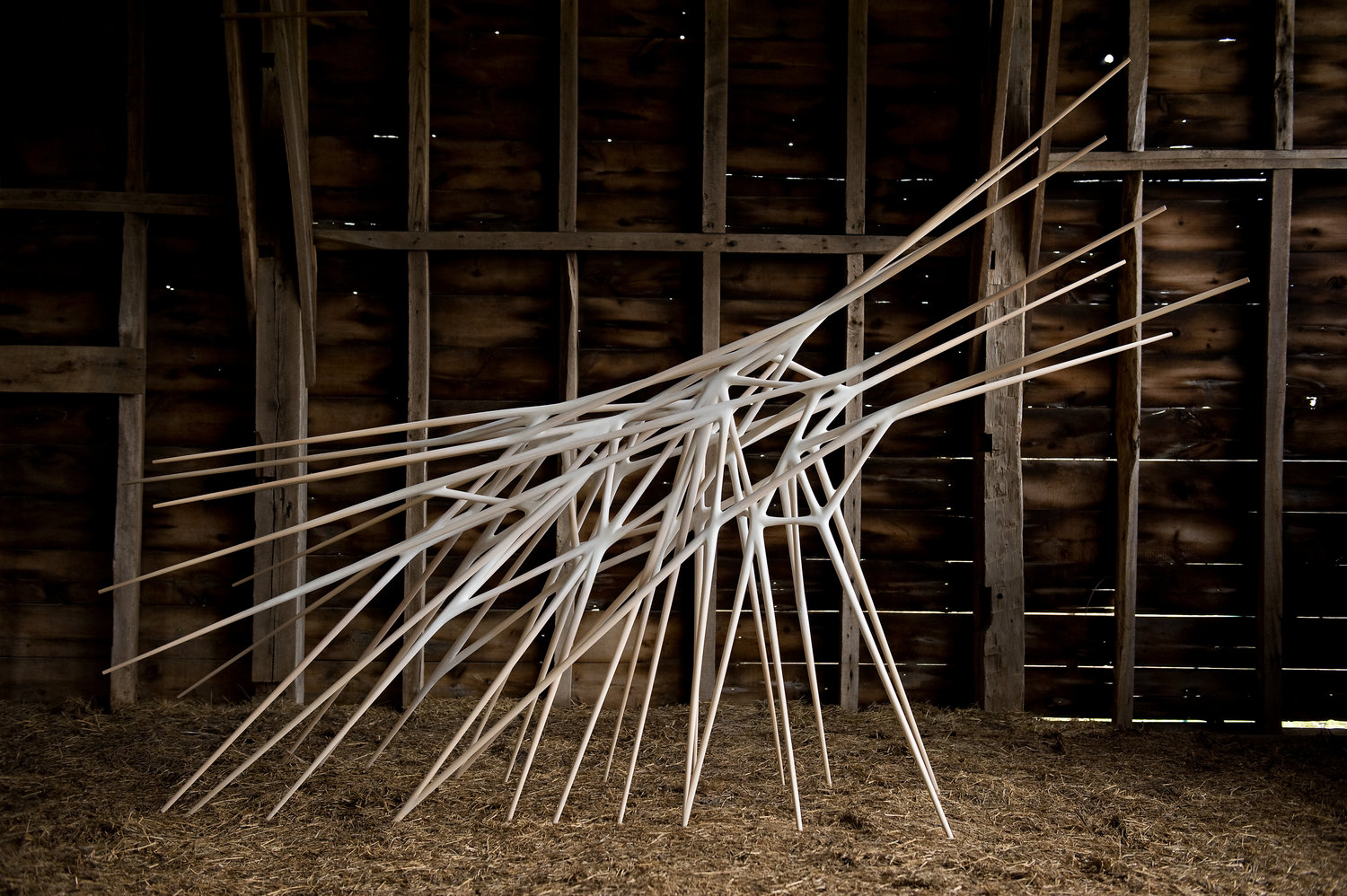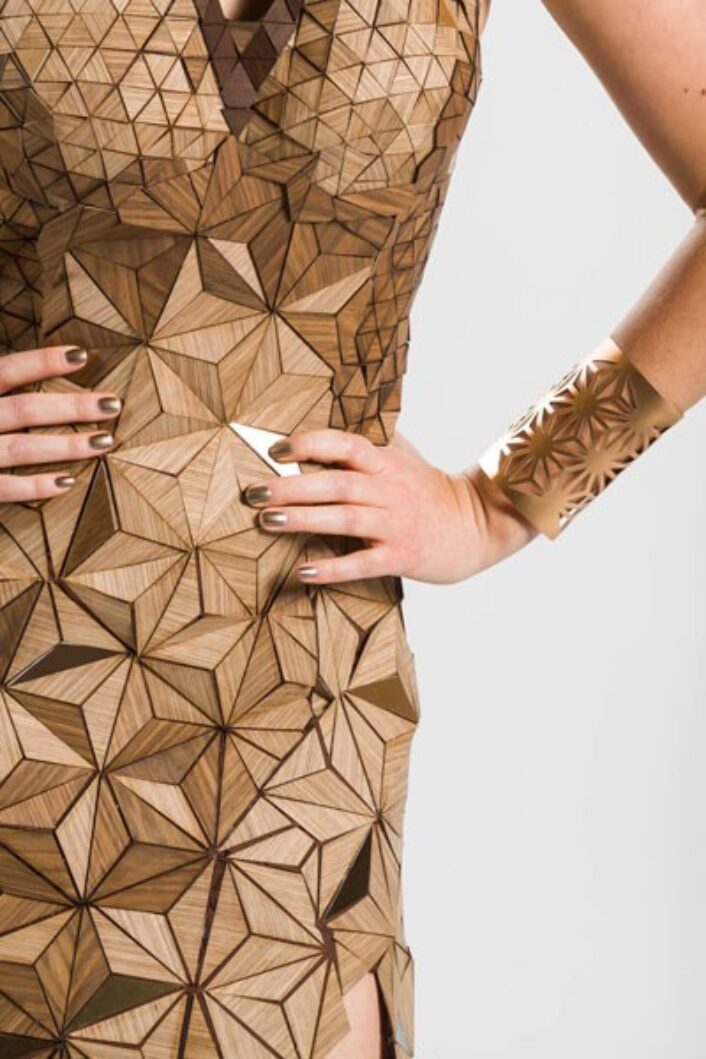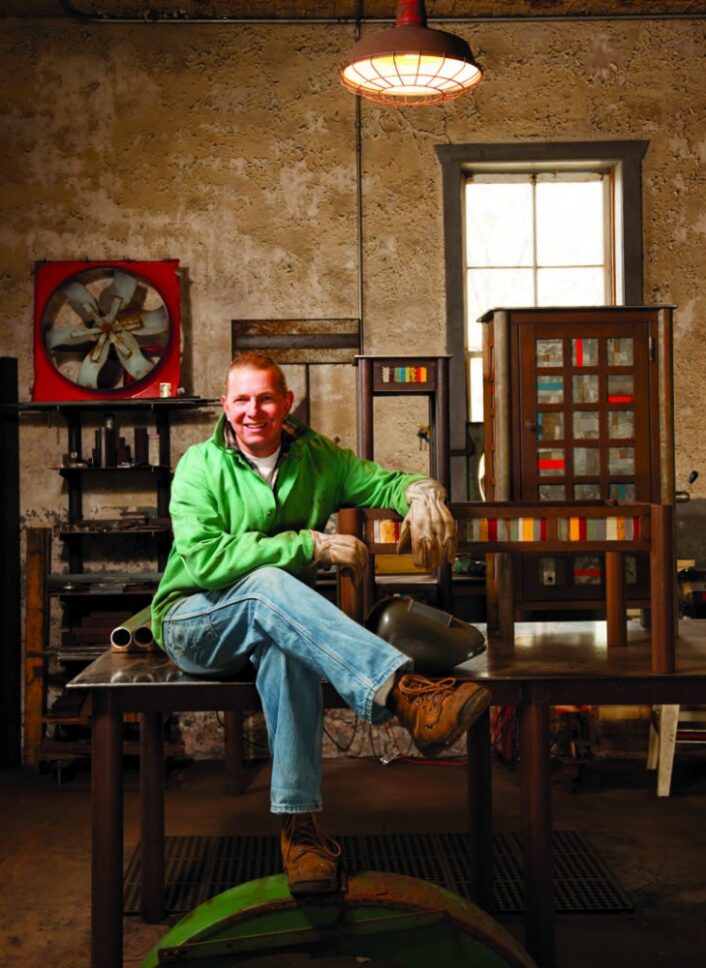Pavilion sculpture, 72 x 48 x 48 inches. Hand-carved in 2018 from tulipwood.
This hand-carved tulipwood “stool” has a green paint finish. the details are based on the design esthetics of Windsor furniture. This large “Pavilion” sculpture was part of Kurtz’s recent solo exhibition, “Sculptures of Furniture: A Windsor Alphabet” at Patrick Parrish Gallery in New York City.
Image courtesy of: 1st Dibs
